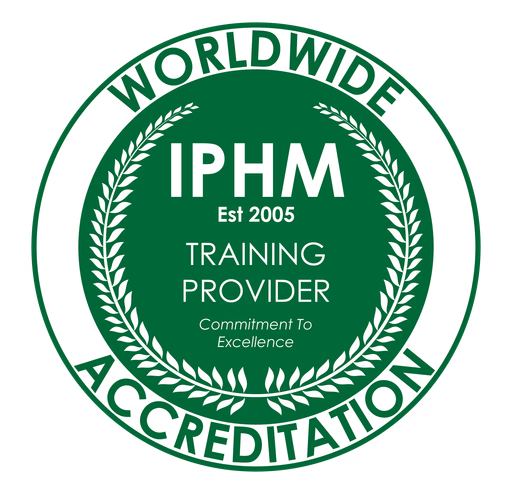
Traditional massage uses hands-on pressure to mobilize muscles, fascia and joints. Sound and vibration therapy uses audible tones and/or mechanical vibrations to influence the nervous system and body-wide resonance often with little or no physical pressure, harnessing the power of sound to promote relaxation and well-being. Massage is tactile and tissue-focused; sound/vibration is sensory-neural and resonance-focused. Both can relax you, reduce perceived pain and improve well-being but they get there by different routes.
The healing power of sound and vibration therapy has deep historical roots and is increasingly supported by scientific research, showing its potential to promote both physical and mental well-being.
Health note: None of this is medical advice. If you have a medical condition, talk with a qualified clinician before starting any new therapy.
Defining Sound & Vibration Therapy
Core Modalities
Tuning forks & singing bowls
Metallic forks and metal or crystal bowls, including traditional Tibetan singing bowls, produce sustained tones. Practitioners hold forks near (or lightly on) the body or play bowls around you or place bowls on the body for gentle vibratory transfer. These bowls generate sound vibrations that are believed to promote relaxation and healing.
Gongs, drums & chimes
Large instruments create richly layered frequencies that can feel immersive. Sessions using gongs, drums, and chimes are often referred to as a sound bath, a traditional sound therapy practice where participants are immersed in deep sound vibrations believed to connect to the body’s energy centers and promote relaxation, stress relief, and pain relief. You lie down while waves of sound wash over you.
Vibroacoustic beds & speakers
Specialized loungers or mats convert music or low-frequency signals into vibration you can feel through your body like a subwoofer, but designed for therapeutic use. These vibrations are believed to interact with the body’s energy centers, promoting balance and relaxation.
Binaural beats & recorded soundscapes
Headphones deliver slightly different tones to each ear, creating a perceived third beat that some people find calming. This demonstrates how sound delivered through binaural beats can influence brainwave patterns and promote relaxation. Nature sounds and ambient music are also used for relaxation and focus.
How It’s Thought to Work
Entrainment & nervous system regulation
Rhythmic sound may help the brain and autonomic nervous system “entrain” toward calmer patterns supporting parasympathetic activity (rest-and-digest) and reducing arousal. This entrainment can also provide mental benefits, such as reducing anxiety and promoting improved mental clarity.
Resonance, fascia, and mechanotransduction
Vibration can travel through soft tissues and fluids, potentially influencing fascia gliding, breathing patterns and body awareness. Mechanotransduction the way cells respond to mechanical input may help explain why gentle vibration can shift muscle tone or perceived tension for some people. These mechanisms may help alleviate symptoms such as muscle tension, pain, or reduced range of motion.
What Counts as Traditional Massage?
Popular Styles
Swedish, Deep Tissue, Sports, Myofascial, Thai
- Swedish: long effleurage strokes, moderate pressure, general relaxation.
- Deep Tissue: slower, targeted pressure into adhesions and deeper layers. Individuals with joint replacement should consult a professional before receiving this technique.
- Sports: performance-/recovery-focused, often with stretching.
- Myofascial: sustained, gentle pressure to improve fascia mobility. Those with joint replacement should seek professional advice prior to treatment.
- Thai: clothes-on, floor-based, includes assisted stretches and compressions.
Mechanisms of Action
Mechanical pressure on soft tissues
Massage physically deforms tissues moving fluids, stretching fascia, mobilizing adhesions and encouraging blood/lymph flow.
Circulation, lymph & pain-gate theory
Touch can reduce pain perception through “gate control” in the spinal cord, while improved circulation and downregulated muscle tone contribute to relief and range of motion.
Key Differences at a Glance
Input: pressure vs. sonic/vibratory stimulus
- Massage: hands, elbows, tools apply pressure and shear.
- Sound/Vibration: acoustic waves and/or mechanical vibration act through hearing and whole-body sensation. In whole body vibration therapy, a vibrating platform is used to transmit vibrations throughout the body.
Target: soft tissue vs. whole-body/neurological
- Massage: primarily muscles, fascia, joints.
- Sound/Vibration: primarily nervous system, breath, proprioception secondarily soft tissue via resonance.
Setup: oils, table & undressing vs. clothes-on, instruments
Massage: usually on a table, under draping, with oils/lotions.
Sound/Vibration: typically clothes-on; you lie on a mat/bed while instruments are played or vibration is delivered.
Intensity, accessibility & sensory profile
- Massage: intensity ranges from light to very deep; requires direct contact and therapist availability.
- Sound/Vibration: often gentler and more accessible for touch-avoidant clients, sensory-sensitive folks (with adjustments), or those who prefer minimal physical contact.
Overlapping Benefits (Where They Meet)
Both can:
- Reduce perceived stress and anxiety
- Improve sleep quality and downshift arousal
- Ease pain and muscle guarding (through different mechanisms)
- Enhance body awareness and mindfulness
- Support recovery and a sense of emotional well-being
- Provide positive effects such as improved relaxation, pain relief, and stress reduction
- Help improve muscle strength and physical function
When Each One Shines
Best use cases for sound & vibration
- You want deep relaxation without physical pressure.
- You’re post-exercise and need gentle nervous-system downshifting.
- You’re touch-averse or dealing with tactile hypersensitivity.
- You’re exploring breath, meditation, or trauma-informed approaches where minimal touch is preferred.
- You want an adjunct to meditation, yoga, or mindfulness.
- You are seeking to support your spiritual well-being and inner peace through sound and vibration therapy.
Best use cases for massage
- You have localized tightness, trigger points, or range-of-motion limits.
- You’re recovering from training and want circulation and tissue mobilization.
- You need biomechanical relief (e.g., desk neck/shoulder strain).
- You’re seeking specific work on scars or adhesions (where appropriate and cleared by a professional).
What the Research Suggests (In Plain English)
Evidence landscape for sound/vibration
Early and small studies suggest potential benefits for stress, mood, perceived pain, and sleep particularly with low-frequency vibration and structured sound sessions. Some studies involve sessions led by a professional sound therapist, while others use self-guided approaches. Methods vary widely, so results can be mixed and more rigorous trials are still needed.
Evidence landscape for massage
Massage has a larger body of research supporting benefits for short-term pain relief, anxiety reduction, and improved function in some musculoskeletal issues. Again, effects vary by technique, frequency, and individual response.
What’s still uncertain
- Which specific frequencies and protocols are best for which conditions.
- How long benefits last and the ideal dose (minutes/week).
- Individual differences why some respond strongly and others less so.
Safety, Risks & Contraindications
Sound/vibration cautions
- Hearing sensitivity, tinnitus, migraines: start with lower volume and softer instruments.
- Epilepsy or seizure history: avoid strobing lights and check with a clinician before using binaural beats or intense sessions.
- Cardiac devices (pacemakers) & pregnancy: consult a clinician; avoid placing vibrating devices directly over the abdomen or chest unless cleared.
- Recent surgeries or acute injuries: gentle only, or wait until cleared.
- Blood pressure concerns: sound healing and vibration therapies may lower blood pressure. If you have blood pressure issues, monitor your response and consult a clinician before participating.
Massage cautions
- Acute inflammation, infections, open wounds: avoid until healed.
- Blood clots, severe osteoporosis, bleeding disorders: seek medical guidance; avoid deep pressure.
- Cancer care or pregnancy: choose trained practitioners with appropriate certifications and protocols.
- Nerve entrapments or severe pain: lighten pressure; coordinate with healthcare providers.
What a Typical Session Looks Like
Sound/vibration session flow
- Intake & goals: stress relief? sleep? emotional processing?
- Setup: you stay clothed, lie comfortably; eye mask offered.
- Immersion: practitioner plays bowls/gongs or activates a vibroacoustic bed; volume and intensity adjusted to comfort.
- Breath & pacing: gentle guidance to slow the breath and lengthen exhales.
- Integration: quiet time at the end; hydration and aftercare tips.
Massage session flow
- Intake & assessment: pain map, range-of-motion checks, preferences.
- Draping & positioning: you undress to comfort level; therapist uses oils.
- Techniques: sequences adapted to your goals; pressure negotiated in real time.
- Reassessment: quick ROM check and self-care cues (e.g., stretches).
- Aftercare: hydration, gentle movement, and spacing of future sessions.
Tools, Spaces & Atmosphere
Instruments & tech for sound/vibration
- Metal/crystal singing bowls, gongs, chimes, tuning forks.
- Vibroacoustic mats/beds with embedded transducers.
- Quality speakers or headphones for curated soundscapes.
- Soft lighting, acoustically mindful room, minimal external noise.
Tables, oils & technique for massage
- Supportive massage table with bolsters and adjustable face cradle.
- Neutral, hypoallergenic oils/lotions; heated towels.
- Clean, quiet environment with clear communication about pressure and consent.
Cost, Availability & Choosing a Practitioner
- Cost: Sound/vibration sessions often equal or slightly less than massage; specialized vibroacoustic tech may cost more.
- Availability: Massage is widely available; sound/vibration depends on region.
- Credentials: Look for training certificates, scope of practice clarity, and client reviews.
- Fit: Schedule a brief consult, discuss goals and sensitivities, and ask about session structure and aftercare.
Combining Both (Sequencing That Works)
Pre-massage priming with sound
5–10 minutes of gentle sound can reduce guarding, making tissues more receptive to hands-on work.
Post-massage integration with vibration
A short, low-frequency “soak” can help the nervous system consolidate the relaxed state after targeted tissue work.
Simple at-home routines
- 10-minute breath + soft drone playlist before bed.
- A small, low-intensity vibration mat (if appropriate) for post-workout relaxation.
- Short, guided body scan with headphones to cultivate interoceptive awareness.
Myths vs. Facts
- Myth: Sound therapy is “just music.”
Fact: It can involve specific frequencies, live instruments, and mechanical vibration aimed at nervous-system regulation. - Myth: Deep pressure is always better.
Fact: More pressure isn’t always more effective; tissues and nervous systems respond differently. - Myth: One session “fixes” everything.
Fact: Benefits are cumulative; consistency matters. - Myth: They do the same thing.
Fact: Overlap exists, but primary mechanisms differ (tissue vs. sensory-neural/resonance). - Myth: If I’m touch-averse, I can’t get bodywork benefits.
Fact: Sound/vibration offers a non-touch pathway to relaxation and body awareness.
Step-by-Step Decision Guide
- Clarify your aim: stress relief, sleep, pain, ROM, emotional processing.
- Check constraints: touch comfort, medical considerations, time, budget.
- Pick your primary: tissue-focused (massage) or nervous-system-focused (sound/vibration).
- Match intensity: deep vs. gentle; live instruments vs. recorded; sports vs. Swedish.
- Trial & iterate: try 2–3 sessions; track sleep, mood, pain, ROM.
- Combine strategically: brief sound before or after massage if you like both.
- Maintain at home: short daily practices to stabilize gains.
Conclusion
Sound and vibration therapy and traditional massage can both move you toward calm, comfort and better function but they travel different roads. Massage applies skilled, mechanical pressure to mobilize soft tissues and joints. Sound/vibration uses acoustic waves and felt resonance to calm the nervous system and shift body-wide tone with little or no touch. Your best choice depends on your goals, preferences, medical context and how your body responds. Many people get the best of both worlds by combining them priming with sound, resolving with massage, and maintaining with simple at-home practices.
FAQs
Yes. Most sessions are fully clothed and involve minimal or no touch, making them ideal if you prefer a non-contact approach.
Yes, use high-quality headphones, soft drones or nature soundscapes, and simple breathwork. Keep volume moderate and focus on slow, comfortable breathing.




